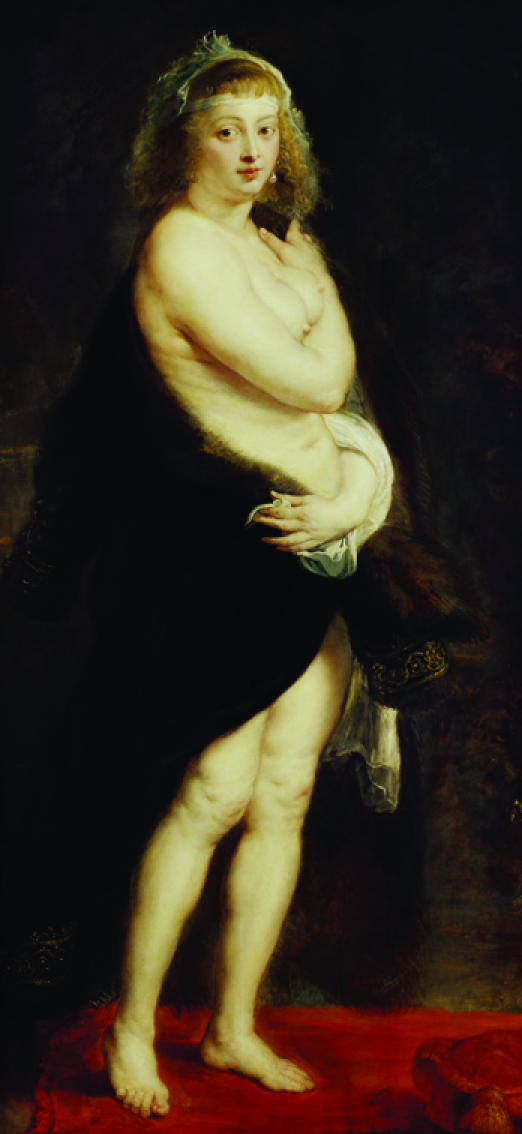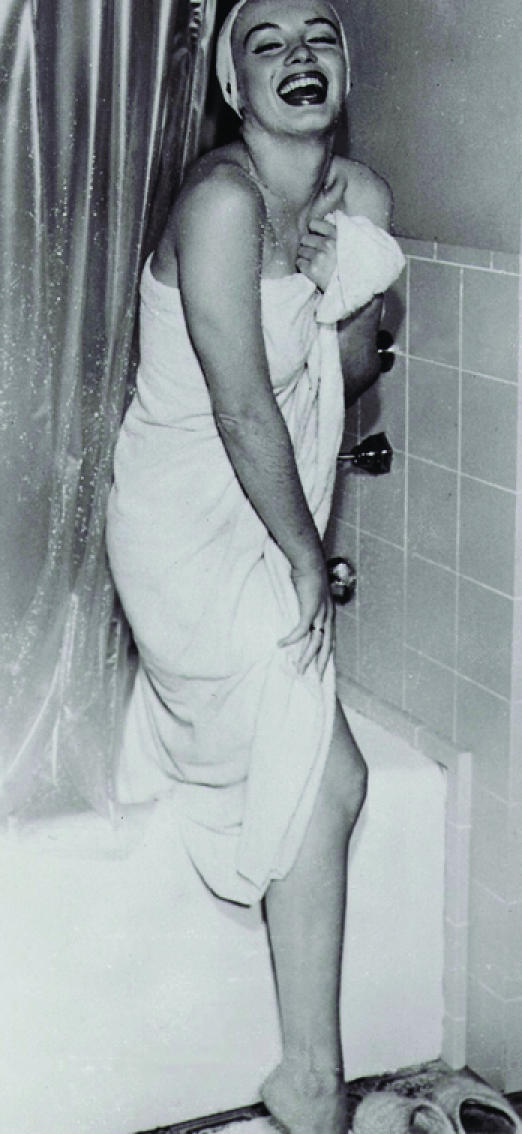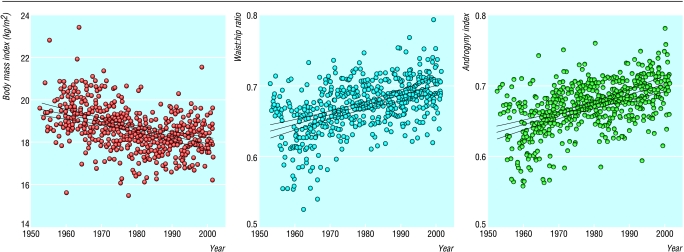Body mass index (weight (kg)/(height (m)2) and waist:hip ratio in women are linked to fertility, endocrine status, risk of major diseases, and longevity.1–3 Health related optimums for body mass index (20 or slightly lower2) and waist:hip ratio (0.7 or slightly lower3) are also maximally sexually attractive to men.1,3 According to evolutionary research, these attractiveness optimums reflect evolved optimal design and thus should not be subject to temporal change.3
This assumption is not consonant with the decline in the optimally attractive body mass index that has occurred in the past few decades, as exemplified by fashion models depicted in the media. With increases in the incidence of eating disorders in the general population of women, this decline is a cause for concern.4,5 In contrast, Singh has reported evidence for the temporal stability of the maximally attractive waist:hip ratio, on the basis of analysis of the waist:hip ratios of centrefold models in Playboy.3 However, Singh based this conclusion, as is the case for other studies pertaining to body measurements of Playboy centrefolds,4 on a partial sample.
Subjects, methods, and results
We looked at the trends in Playboy centrefold models' body measurements by analysing 577 consecutive monthly issues, from the magazine's inception in December 1953 to December 2001. We extracted centrefolds' anthropometric data: height, weight, and measurements for bust, waist, and hip (n=532-543, owing to missing data). We calculated composite measures from these data: body mass index, waist:hip ratio, waist:bust ratio, bust:hip ratio, and an androgyny index (suggested by a reviewer)—waist/((hip*bust)**0.5). We correlated individual measures with magazine issue number (1 to 577).
All measures except weight, which was nearly stable (r=−0.02) and hence may indicate a stable attractiveness cue, showed significant temporal change (if not specified, P<0.001). Whereas the increase in height (r=0.36) merely reflects the well known secular acceleration trend, and an increase in the age of models (r=0.22) was not relevant to this investigation, all other changes call for attention. Over time, bust size (r=−0.36) and hip size (r=−0.29) decreased, while waist size increased (r=0.27). Composite measures of body shape captured the same trends: body mass index (r=−0.46) and bust:hip ratio (r=−0.13; P=0.002) decreased, while waist:hip ratio (r=0.47), waist:bust ratio (r=0.48), and androgyny index (r=0.50) increased.
Comment
The data suggest notable temporal trends in measures of body shape in Playboy centrefold models (figure). The typical body mass index of Playboy centrefolds has further descended below corresponding population levels, whereas their typical waist:hip ratio now approaches population levels. In sum, centrefold models' shapely body characteristics have given way to more androgynous ones. These temporal trends are at odds with claims that centrefolds' body shapes are still more “hourglasses” than “stick insects”4 and that the maximally sexually attractive female waist:hip ratio is stable.3
Figure.

KUNSTHISTORISCHES MUSEUM, VIENNA/BAL; KOBAL; DMW/REX

KUNSTHISTORISCHES MUSEUM, VIENNA/BAL; KOBAL; DMW/REX

KUNSTHISTORISCHES MUSEUM, VIENNA/BAL; KOBAL; DMW/REX
Changing trends in body shape: Rubens's wife (1636-8); Marilyn Monroe (1952); Eva Herzigova (2001)
Figure.
Temporal change in body measures of Playboy centrefold models. Circles show individual data points (slight random jitter added to increase visibility). Linear regression (middle line) and 99% confidence intervals (upper and lower curves) are superimposed
Footnotes
Funding: None.
Competing interests: None declared.
References
- 1.Tovée MJ, Reinhardt S, Emery JL, Cornelissen PL. Optimum body-mass index and maximum sexual attractiveness. Lancet. 1998;352:548. doi: 10.1016/s0140-6736(05)79257-6. [DOI] [PubMed] [Google Scholar]
- 2.Manson JE, Willet WC, Stampfer MJ, Colditz GA, Hunter DJ, Hankinson SE, et al. Body weight and mortality among women. N Engl J Med. 1995;333:677–685. doi: 10.1056/NEJM199509143331101. [DOI] [PubMed] [Google Scholar]
- 3.Singh D. Adaptive significance of female physical attractiveness: role of waist-to-hip ratio. J Pers Soc Psychol. 1993;65:293–307. doi: 10.1037//0022-3514.65.2.293. [DOI] [PubMed] [Google Scholar]
- 4.Tovée MJ, Mason S, Emery JL, McClusky SE, Cohen-Tovée EM. Supermodels: stick insects or hourglasses? Lancet. 1997;350:1474–1475. doi: 10.1016/S0140-6736(05)64238-9. [DOI] [PubMed] [Google Scholar]
- 5.Rintala M, Mustajoki P. Could mannequins menstruate? BMJ. 1992;305:1575–1576. doi: 10.1136/bmj.305.6868.1575. [DOI] [PMC free article] [PubMed] [Google Scholar]



